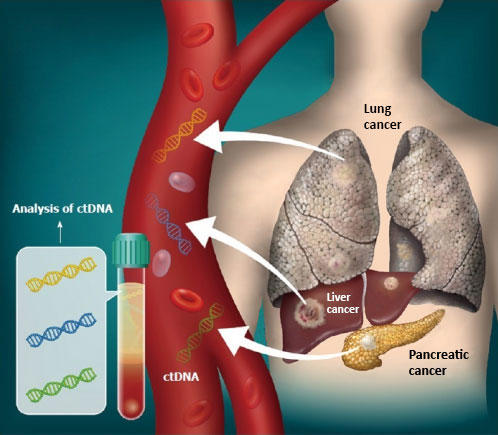Researchers from Karolinska Institutet and Maastricht University have developed a technique that enables the examination of embryos for all known genetic abnormalities with a single test. The new method is more accurate and faster than existing techniques, increasing the chance of a healthy child for parents at increased risk of inherited conditions. The research was published today in Nature Communications
Prospective parents who are at risk of having a child with a serious hereditary condition or repeated miscarriages due to chromosomal abnormalities may opt for pre-implantation genetic testing (PGT), also known as embryo selection. It is an IVF treatment in which embryos are screened for known genetic abnormalities, and only embryos without the abnormality are placed in the womb.
Led by geneticist Masoud Zamani Esteki, an affiliated researcher at the Department of Clinical Science, Intervention and Technology, Karolinska Institutet, researchers at Maastricht UMC+ have developed a technique that can analyse the entire genome - all genes and chromosomes - in a single test. This means that any hereditary condition for which help is sought can now be detected faster and more effectively.
Multiple tests are replaced by a single test
Genetic abnormalities can occur in different places. For example, a change in a single gene can increase the risk of hereditary breast cancer, while a chromosomal abnormality can lead to repeated miscarriages because the embryos are not viable. Previously, different tests were required to detect different types of abnormalities, meaning that each couple needed to undergo a separate genetic examination to decide which test to use. With the new test, which can detect all known types of abnormalities, the preliminary procedure is the same for everyone and much faster.

"With the available tests, we could only examine specific parts of the genetic information in an embryo. This new technique maps all the genetic information in an embryo, which means we do not need to develop a PGT test for each individual condition. In addition, this technique can also detect specific genetic abnormalities, namely those in the DNA outside the cell nucleus (mitochondrial DNA), such as in MELAS syndrome," says Masoud Zamani Esteki.
More embryos
In addition to being more complete, the new technique is also more accurate than current methods and reveals even the smallest errors in the genetic material.
Masoud Zamani Esteki explains: "In the past, prospective parents had to wait a long time for the test to develop and some embryos could not be transferred because the PGT result was unclear. Now we can determine this quickly and with more than 99 percent certainty, which means that more embryos can be considered for transfer".
The new technique is now being used at Maastricht UMC+, the only PGT centre in the Netherlands. PGT centres in other countries are expected to adopt the technique.
Some ethical questions remain
As the new technology makes it possible to examine the entire genetic material, new possibilities arise.
"In principle, we can look beyond the condition for which help is sought and better determine which embryos have the best chance of succeeding in pregnancy and giving birth to a healthy child. As a result, fewer placement procedures would be needed", says Masoud Zamani Esteki.
He emphasises that a number of ethical issues must first be resolved for these applications. For example, there should be an agreement on which unexpected abnormalities we have solid evidence, such that we do not select embryos for transfer and which can be considered normal genetic variation. So both ethical consideration and new data is required to define these guidelines in the clinic.
The research was carried out at the GROW Research Institute of the Faculty of Health Sciences, Medicine and Life Sciences, which is part of Maastricht University and Maastricht UMC+, in close collaboration with the Laboratory of Clinical Genetics at Maastricht UMC+.
This text is based on a press release from Maastricht University.
Publication
Anouk E. J. Janssen, Rebekka M. Koeck, Rick Essers, Ping Cao, Wanwisa van Dijk, Marion Drüsedau, Jeroen Meekels, Burcu Yaldiz, Maartje van de Vorst, Bart de Koning, Debby M. E. I. Hellebrekers, Servi J. C. Stevens, Su Ming Sun, Malou Heijligers, Sonja A. de Munnik, Chris M. J. van Uum, Jelle Achten, Lars Hamers, Marjan Naghdi, Lisenka E. L. M. Vissers, Ron J. T. van Golde, Guido de Wert, Jos C. F. M. Dreesen, Christine de Die-Smulders, …Masoud Zamani Esteki
Nature Communications volume 15, Article number: 7164 (2024)






